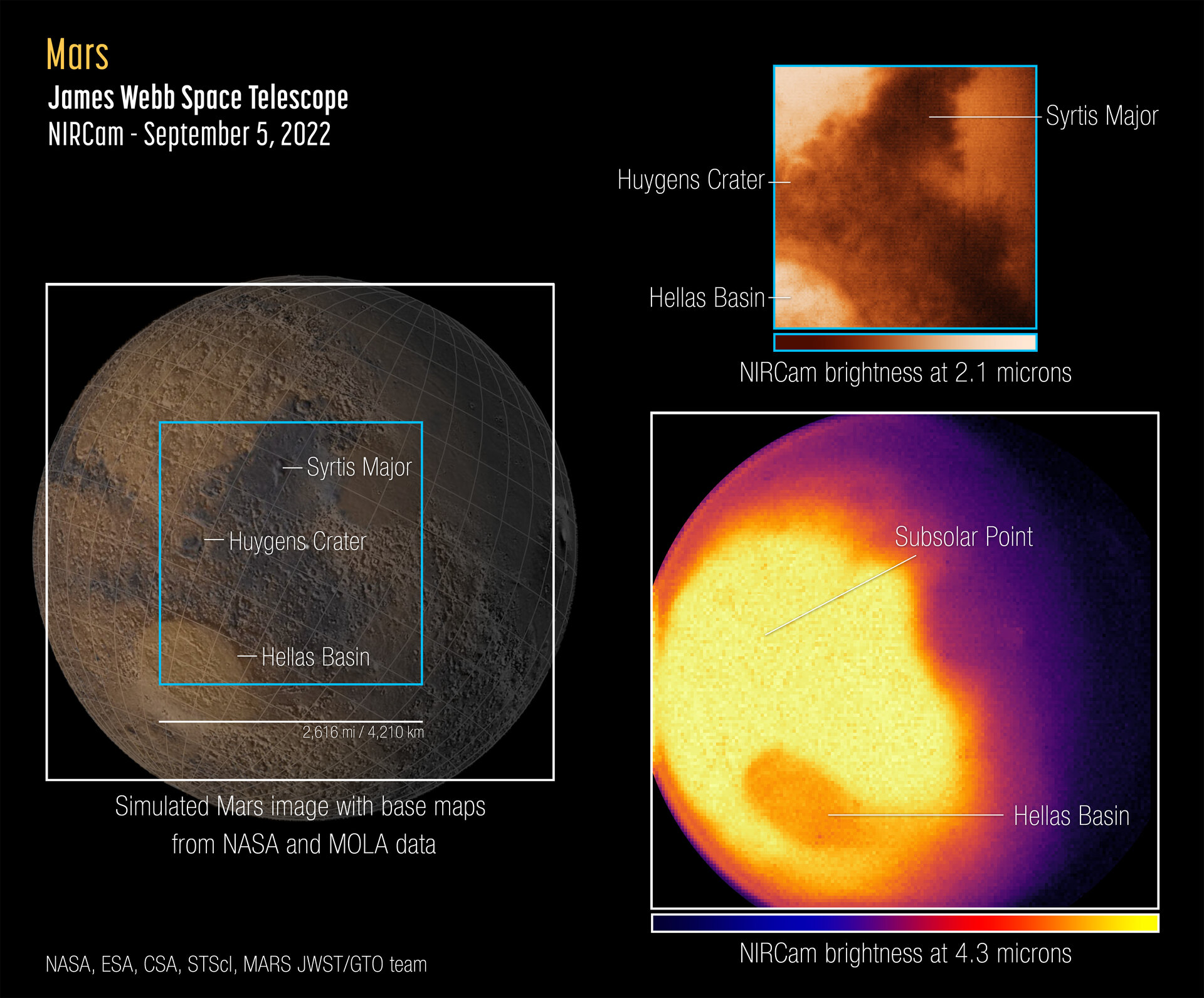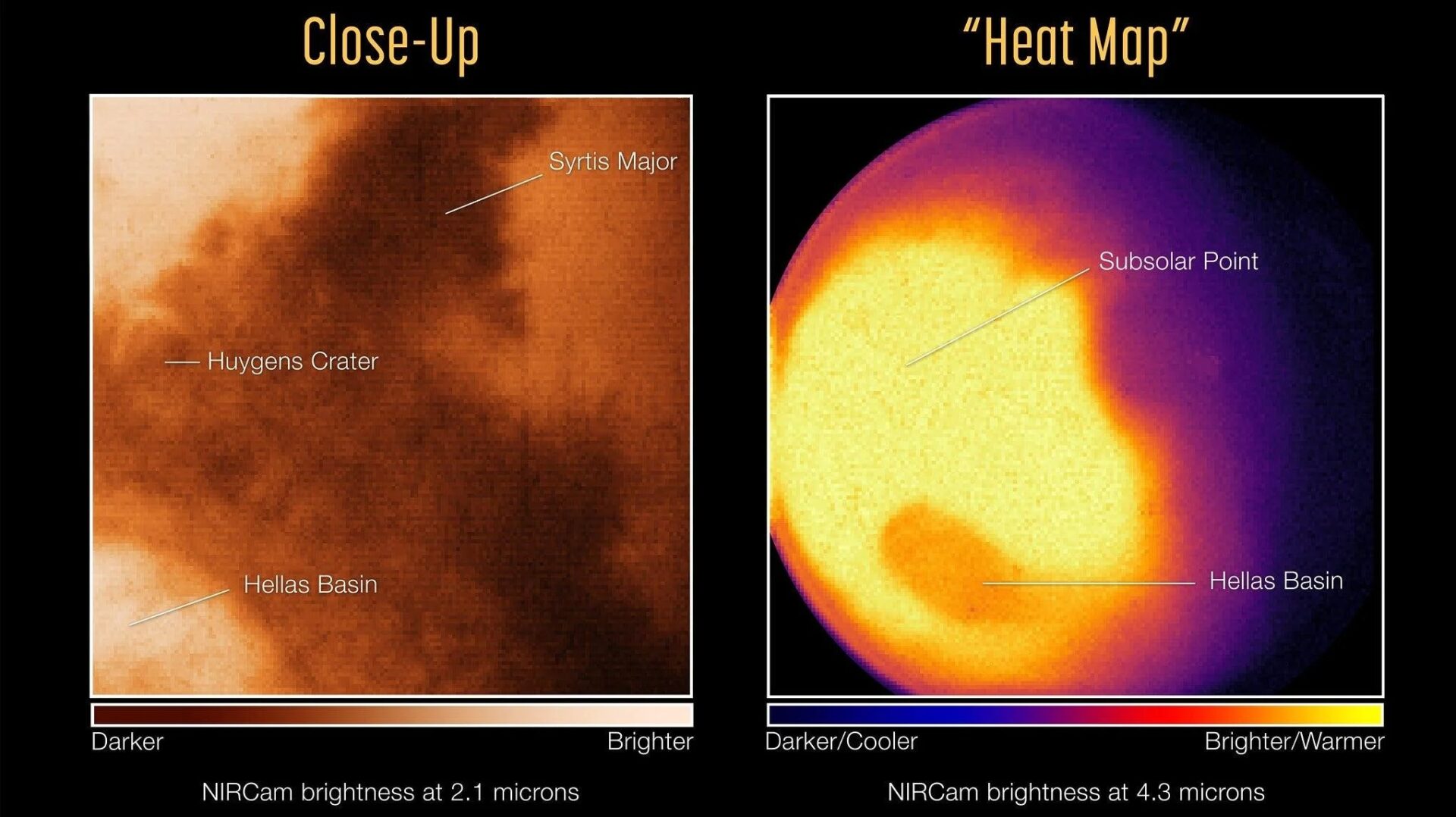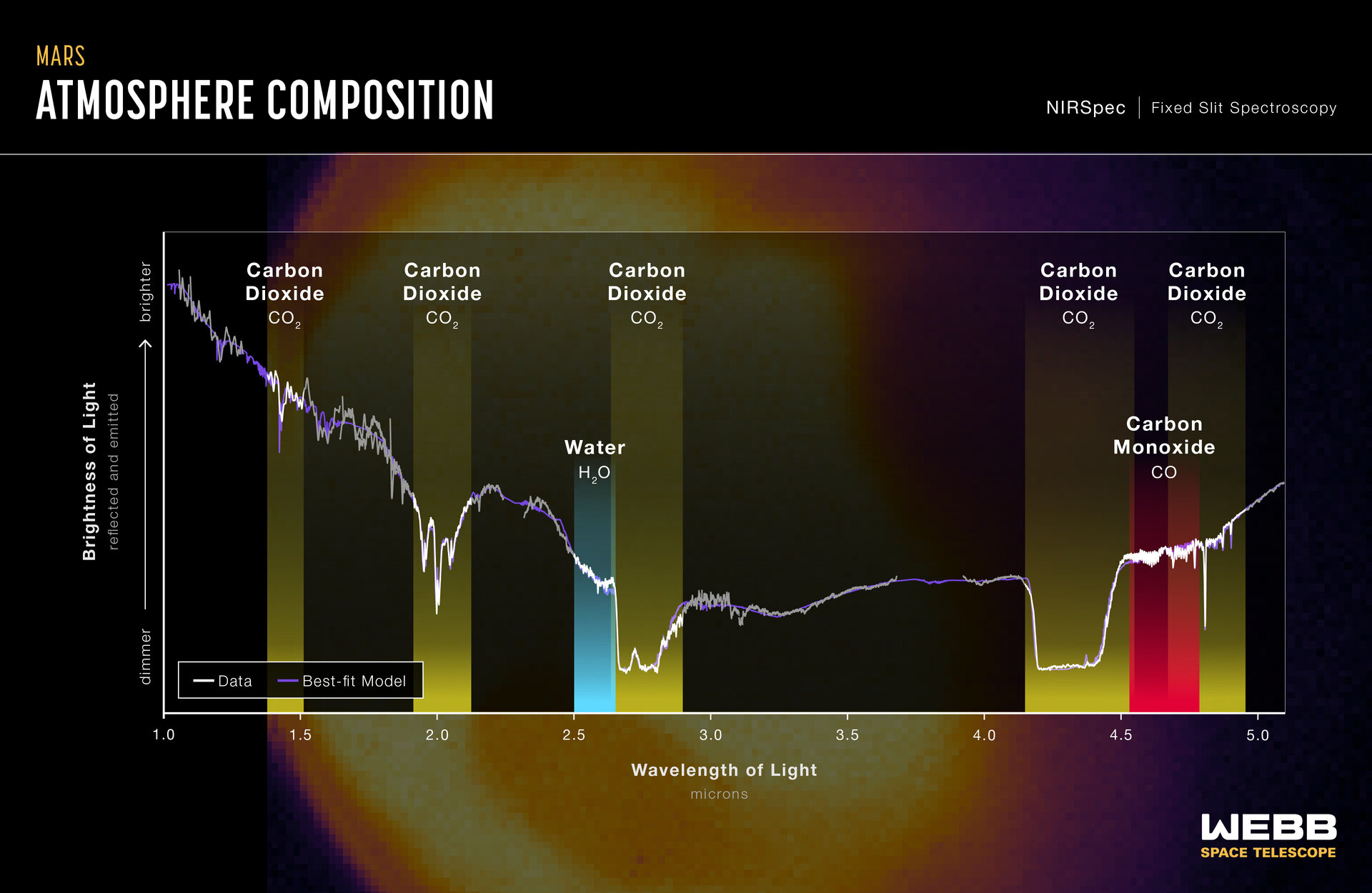The James Webb Space Telescope has already amazed society with photos of distant galaxies and sparkling nebulae. Now the look of the USD 10 billion device has been replaced by the planets of the Solar System. Recently, the telescope observed Jupiter, and the other day JWST sent photos of our neighbor Mars. The published data obtained from the infrared instruments of the telescope give scientists information about the surface of the Red Planet and its atmosphere.

The European Space Agency (ESA) announced that James Webb observed Mars on September 5, 2022 using a near-infrared camera (NIRCam) and a near-infrared spectrograph (MIRI). The first image of Mars from the telescope consists of two images taken at two infrared wavelengths. It shows the sunlit eastern hemisphere of the planet, which JWST observed from its observation point almost 1.5 kilometers from Earth at the L2 Lagrange point.

James Webb also collected some spectroscopic data on the atmosphere of Mars using the NIRSpec instrument. The spectrograph shows which molecules of the thin atmosphere of Mars, including carbon dioxide, water and carbon monoxide, correspond to the selected dips on the graph. Of course, this is far from an innovative conclusion, but it demonstrates the ability of JWST to accurately determine the composition of the atmosphere of different planets.

“These first observations of Mars by James Webb demonstrate exactly how scientists can study various regions on its surface, including the composition of its atmosphere, using the NIRSpec instrument. Based on the new data, the space telescope gives us a new look at important topics such as the existence of water on Mars in the past,” explained Chris Evans, a researcher from ESA.
By aiming the telescope’s gaze at Mars, scientists can determine how reliable a high-tech telescope is in studying very distant exoplanets. While James Webb continues to look at objects in the deep Universe, we are also excited to get new views from different parts of our home Solar System.
Follow us on Twitter to get the most interesting space news in time
https://twitter.com/ust_magazine

